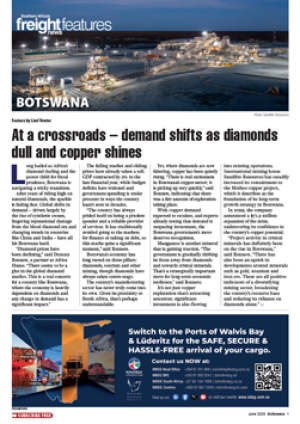Commodity prices, whether energy or solid minerals, have fallen dramatically over the last couple of years and there is little anticipation that they will reach the heady days of 2013 and 2014 any time soon. However, there are green shoots of optimism amongst extractives companies that they will be able to make final investment decisions on major projects in sub-Saharan Africa in the next year to 18 months.
These projects, and the changing patterns of urbanisation, infrastructure development and industrialisation across Africa present very real, long-term opportunities for companies based in South Africa.
Many companies in South Africa will doubtless look at this with scepticism and adopt a wait and see attitude before belatedly looking for supply opportunities into these developments and the ancillary projects that support them – but they will be disappointed as they will arrive too late.
A quick analysis of project data reveals that the East African Oil and Gas sector holds around US$100bn in investment opportunity directly and through ancillary and downstream developments over the next decade, a figure likely to rise as these investments draw in secondary rounds of development in unrelated sectors such as social infrastructure, leisure facilities and more integrated town planning, as well as secondary industrial development. There are similar developments afoot in West Africa, with oil exploration and development taking place from Ghana through to Senegal and Mauritania, to add to the developed fields of Nigeria and Central Africa,
Recovering copper and coal prices are starting to see renewed optimism in Southern Africa’s copper and coal producers such as Zambia, DR-Congo, Mozambique, Botswana and Zimbabwe. It’s worth remembering that in 2003 the DR-Congo’s copper output had fallen to a little over 30 000 tons a year, but a decade later had reached the 1 million ton mark. There is enough in the project pipeline to double this figure again, should prices and the political situation turn favourable, allowing for investment in the necessary infrastructure (especially power) to develop new and existing resources.
In many of these development hotspots, the opportunity lies not only in the direct projects, but in the support infrastructure around them – roads, ports, rail, power, housing, retail and commercial property, hotels and the like, many of which are already being developed or are at advanced planning stages.
As companies based in South Africa or Southern Africa, how do we take advantage of these developments and what are the key issues that we need to be aware of when engaging in the region? Over the next few months, we’ll analyse some of the key issues that companies that are serious about engaging for the longer term and gaining traction in regional markets need to be aware of, need to plan around and need to build into their business strategies in order to reap maximum benefit going forward. These issues include:
- South Africa’s weakened position in the region as a key supplier of goods and services into these developments, as supply globalises. Most of the project promoters and their EPC contractors are from the developed north and they have established supplier bases and supply chains, which companies in the region have to break into. Moreover, suppliers from across the globe are taking cognisance of the surge in project activity in sub-Saharan Africa and are increasingly active in the region;
- The growing ‘nationalism’ around supply of goods and services into these developments. This isn’t simply an African phenomenon and nor is it likely to be a passing fad on the back of high commodity prices from the recent past. Most countries in the region either already have local procurement regulations or are in the process of implementing them - and this can be either a barrier to entry or an entry strategy depending on your outlook;
- How we can react and what instruments we have at our disposal in order to engage and entrench ourselves into long-term developments in sub-Saharan Africa. There is often criticism in South African business circles that government does not offer enough support to business, but very few businesses take full advantage of the support offered;
- Finally, integrating South Africa’s competence into the region on a mutually beneficial basis. This is critical not only in order to grow our domestic industrial capacity and supplier base, as well as to attract investment into South Africa as a major gateway for global businesses looking to entrench themselves in the region, but also to create a more balanced business environment in the region that sees South African-based companies as the drivers of development and industrialisation in sub-Saharan Africa on a sustainable basis;
In summary, at the turn of the century, only South Africa of sub-Saharan Africa’s (now) 48 countries had a GDP of over US$100bn in today’s terms. A decade later, Nigeria and Angola have joined the club and by 2022 – just five years from now - it is expected to be a far less exclusive club, with Sudan, Ethiopia and Kenya all part of the club and Tanzania, Ghana, Cote d’Ivoire and DR-Congo all with economies of between US$50bn and US$75bn. These ten countries will have a combined GDP of US$1.9 trillion in five years, surely reason enough to engage in serious discussion about how best to tap into these dynamic markets?









